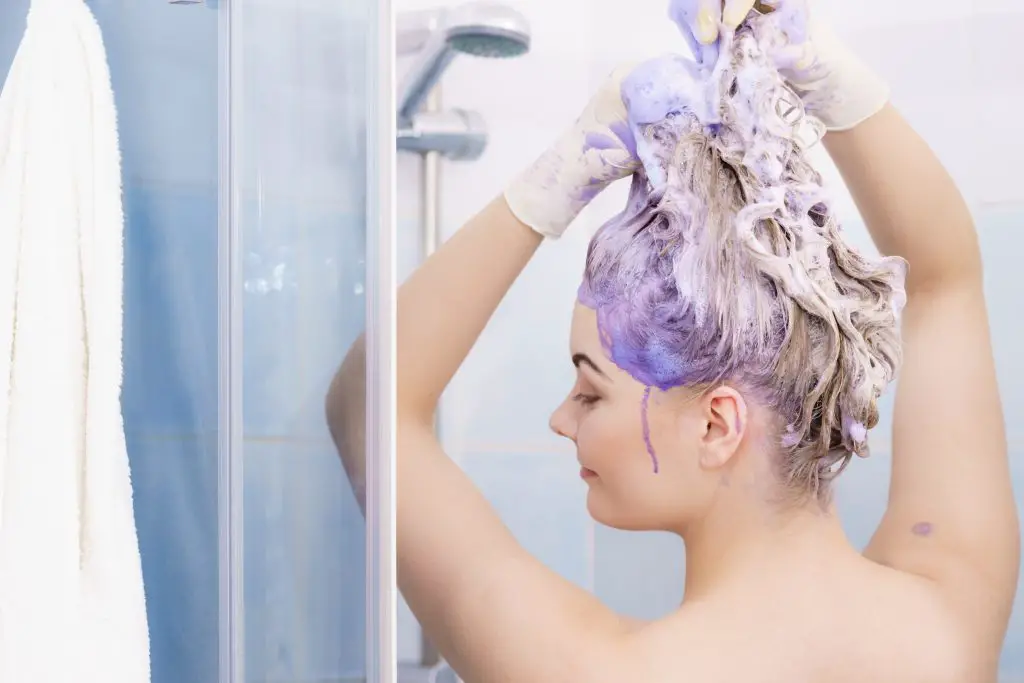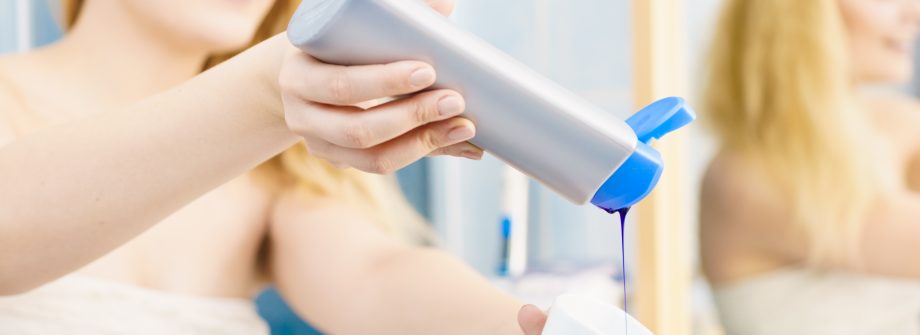Wouldn’t it be amazing to have nice, healthy hair that was just the way you want it, without having to make frequent visits to the salon? If you are blonde or have blonde highlights, we realize how challenging maintaining your hair may be.
Generally, light-colored hair is prone to discoloration. This could be a result of heat styling, product build-up, swimming, or even life itself. It is really frustrating when you have paid to rock a lush and healthy mane of golden locks only to have to deal with hair that looks more like bananas and oranges. This is why hair experts often recommend using colored shampoo.
Let’s not forget that those with red, grey or brown hair could often use some color management, too. Every hair color can benefit from a color wash.
Color shampoos can give your hair that chic salon-fresh look. In fact, a really good shampoo – if applied correctly – can delay that next appointment at the salon by weeks.
However, many users have tons of questions on how to get the best results with color shampoos. So, if you fall into this category, you may be wondering which color you should be using, how you should use it, or how frequently you need to apply it.
The Secret Behind Color Shampoos
There is really no magic behind color shampoos. They simply depend on the theory of the color wheel. This states that colors that are close to one another will work together while opposite colors will not work together.
For instance, violet and purple are the opposites of orange and yellow. That is why applying purple shampoo will neutralize any yellow or orange undertones in your hair.
Blue Versus Purple Shampoo
Purple shampoos are formulated for blondes. This applies to medium blonde, extra-light, and true blondes. They will also work for those blondes with some silver hairs or those who are completely silver-haired. Violet and purple are recommended for these hair types because, according to the color theory, these shades will naturally cancel out tones of yellow or gold.
Blue shampoos, on the other hand, are better for brunettes. This applies to really dark blondes or brunettes that have highlights as well. The blue will cancel out warm orange tones and brassiness.
Some people think that using purple shampoos on brass-colored hair will yield better results than blue, but we disagree. Blue shampoos will actually achieve better results on darker colors. Along the same line, purple shampoos will be ineffective on brunettes and dark blondes. So, don’t waste your money on a shampoo that will not give you the results you were hoping for.
Violet will mask yellow, but blue is even better at taking out orange.
If you have bleached hair, you should look no further than purple shampoo. This will save you from having to dye your hair over and over again. Including a purple shampoo in your regular shower cycle will keep your blonde cool and bright.
Know Your Hair
First and foremost, as with most cases where you are trying a product for the first time, you need to know your hair type and its undertones. If you do not know the answers to these questions already, you should ask your stylist. At your next appointment, you could ask them about your undertones. If you get that information, then you will be headed in the right direction.
Since this article is about blue versus purple shampoo, we would prefer to talk about these shampoo colors and give you as much information as possible. Then you can decide what hue you would like to try out next.
If you have the kind of hair that has brassy tones or orange hues in it, then a blue shampoo would be a good choice for you. But, if your undertones are more yellow than anything else, then a purple shampoo would be your best bet. Then again, if your hair is mostly grey, purple shampoo would be the better choice for your hair.
How to Use Colored Shampoo
You need to tone your hair color when the roots and/or the body of your hair start to bother you or begin to look dull.
To use a color shampoo, start by washing your hair with your regular purifying shampoo. By using this shampoo first, you will remove any product buildup, including pollutants. This will allow the color shampoo freer access to your hair so that it can work better.
After using your regular shampoo, squeeze a small amount of the colored shampoo into your hand and apply it to your hair. Work it through all of your hair.
If you get some of the shampoo (blue or purple) on your bathroom floor, there is no need to panic. These shampoos are made to hold on to your hair, not the surfaces in your bathroom. So, if any accidentally spills, you can clean it up with some water.

Once you have worked the shampoo through all of your hair, allow it to sit for a few minutes. Then, just rinse it out and condition your hair as you would normally do.
Note: Leaving the shampoo sit for longer than 15 minutes, using the purple variant, for example, will produce a lilac stain. This can be cool if you have gray or silver hair. Otherwise, it will not be good, especially if your goal is to retain your natural blonde.
In the beginning, it is best to repeat the process at least 2 to 3 times per week. Keep in mind that the effects of these shampoos vary between users, though. That is why you should consult your stylist before beginning.
Finally, while it is okay to aim for a particular tone, you must be patient. It can take several applications to get what you really want.
Tips for Choosing the Correct Shampoo for Your Hair
- Firstly, try to understand what undertones you have in your natural hair: yellow or orange. If you have both, try determining which one is more prominent. This will help you see which tone you’re trying to correct and therefore which shampoo – the blue or purple one – you need to us!
- Even though purple shampoo is mostly meant for bleached hair, brunettes with blonde highlights might benefit from using purple shampoo to maintain highlights. It really depends on what tones you’re trying to correct, meaning that in some cases purple shampoo might be a better option than blue shampoo. Purple shampoo can be also used to make your black hair stand out! The pigment won’t lighten your hair, it will only add depth and shine to the color.
- For orange undertones use blue shampoo. You can also use blue shampoo if your hair is a lighter shade of brown. Brunettes will look sharper with the help of the blue pigment. On top of that, it will also provide a nice, healthy shine to your hair!
- When choosing your shampoo, make sure to pay attention to how much pigment the product has! That how much pigment the shampoo has and what are its tonal attributes will determine how effective the shampoo will.
- Good blue and purple shampoos have a thick consistency and a deep color. A good colored shampoo also shouldn’t appear translucent. So, if the shampoo that you’re looking at has a darker color and it is opaque then you can be pretty sure that you’re buying a blue or purple shampoo that will work properly and really help keep your hair color in check.
And remember, always deep-condition your hair after using a colored shampoo!
Our recommendations for the best purple shampoos:
- Bold Uniq Purple Shampoo: Formulated with Vitamin B5 this purple shampoo softens the hair and adds shine to natural or color-treated hair. This shampoo will also protect your hair color against fading. And the best part? This product is not tested on animals and the packaging is fully recyclable.
- Fanola No Yellow Shampoo: This shampoo is ideal for dry, frizzy and treated hair. The pigment in this product tones down unwanted yellow hues in grey, light blonde, or streaked hair.
- Matrix Silver Purple Shampoo: This product neutralizes unwanted brassy warmth as well as eliminates dull, yellow tones in blonde and grey hair without stripping it.
Our recommendations for the best blue shampoos:
- Fanola No Orange Shampoo: This anti-orange toning shampoo has a special blue pigment, making it ideal for brunette, dark blonde, grey and platinum hair. The blue pigment tones down unwanted orange hues and neutralizes undesired copper and red reflections.
- Hask Blue Chamomile Blue Shampoo: Infused with blue chamomile, this shampoo helps lighten and boost blonde tones. It’s also infused with argan oil to provide the extra moisture that blonde hair craves. And it doesn’t contain sulfates, parabens, phthalates, gluten or other drying ingredients.
- Jaico Blue Shampoo: This blue shampoo gives long-lasting results. It also minimizes frizz and maximizes shine, while upping also boosting the color of your hair.


I have wonderful results with Fanola No Yellow. I am bleached out to pure white which is hard to maintain. Recently I used my Fanola shampoo followed by a silver deposit conditioner. Result – pale blue hair. My husband was not amused. Fortunately two shampoos with a sulfate shampoo removed the blue, leaving it a lovely white. Lesson learned – don’t mix products, stick to one at a time.